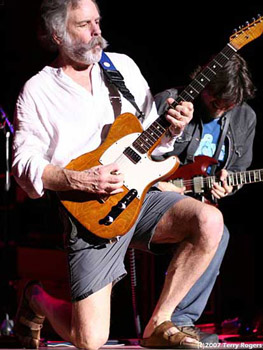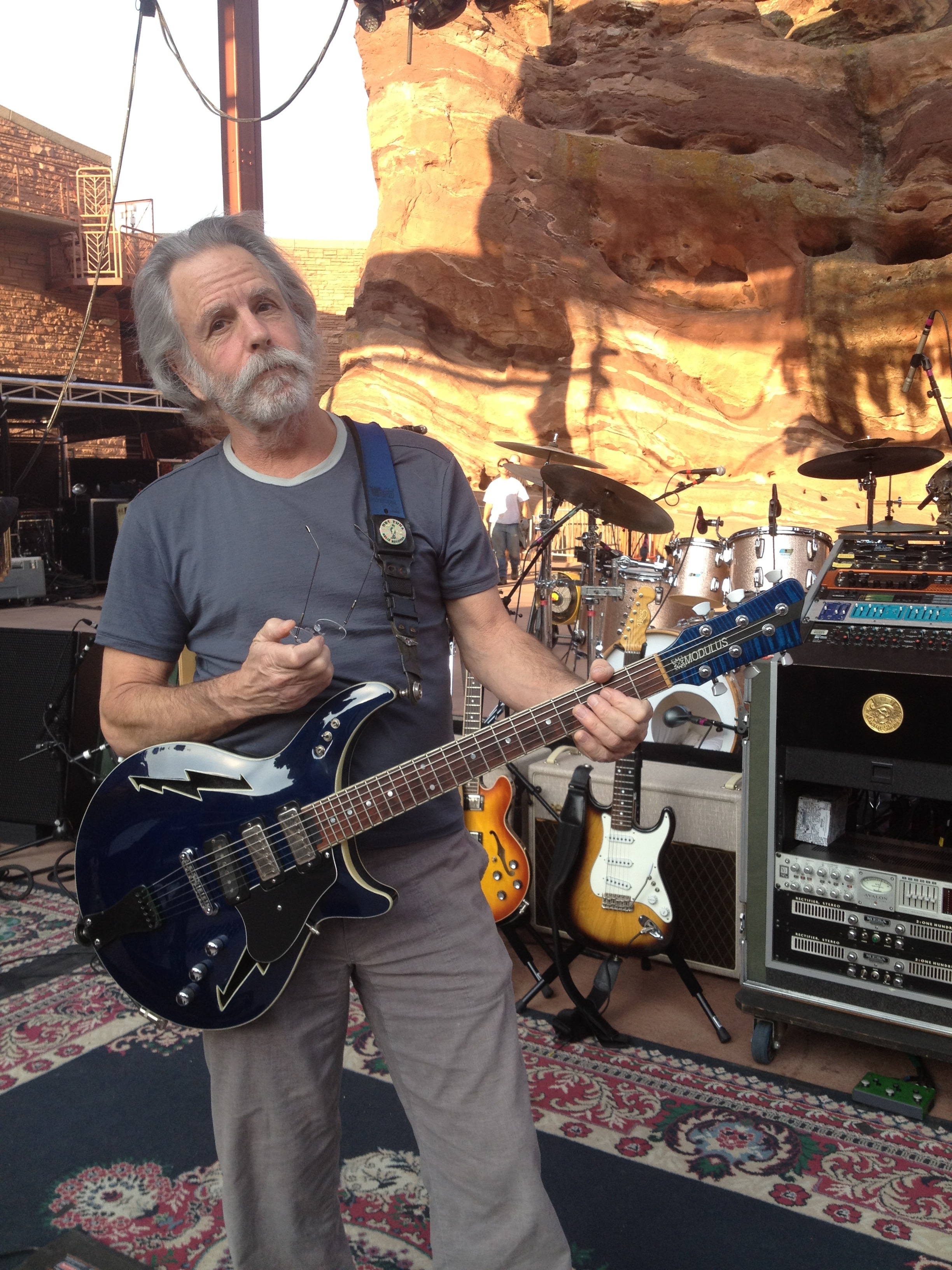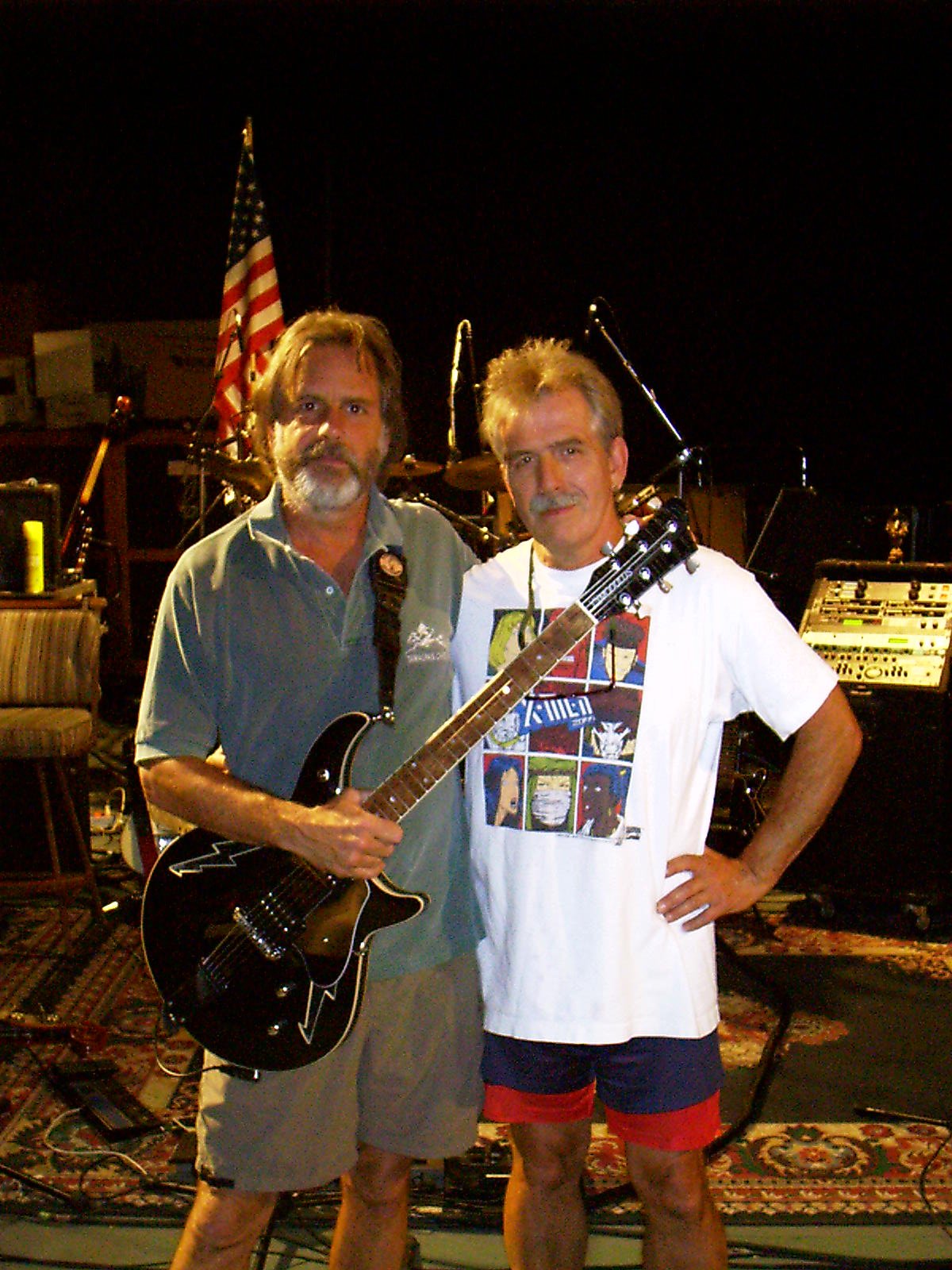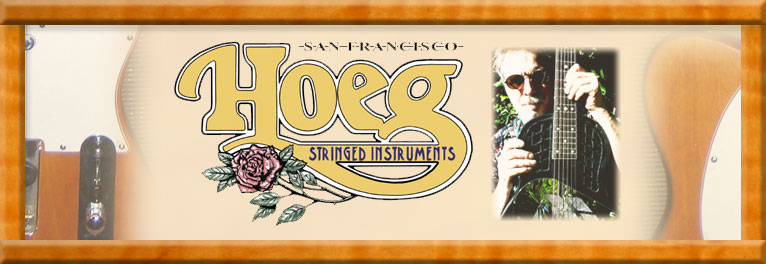Blue Lightning Bolt
An interesting article recently posted on GuitarMuse.com, mentioning Hoeg Guitars and the G3FH Lightning Bolt built for Bob Weir.
To Read Click on Link Below:
http://www.guitar-muse.com/bob-weir’s-modulus-g3fh-lightning-bolt-guitar-2847
"You build 'em, I'll play 'em."
-- Bob Weir


Sunday 9/23/12 at Red Rock sent from AJs cell phone
This is the story of how the Lightning Bolt was developed
When Modulus moved from San Francisco to Novato, I was the new production manager. Part of this job was to build some of the custom instruments. Soon it became obvious that I was better at designing and building custom instruments than managing production. Modulus soon opened the Custom Instrument Department, and that was my new job.
One of the projects was to create a new model guitar for Bob Weir. Bob and I met and kicked around some ideas. Bob brought me his George Benson Ibanez archtop jazz guitar. He said that this body size was what he wanted, so I morphed the Modulus G3 cut aways on top with the George Benson bottom part of the guitar, and we had the new body shape. We then talked about the F-holes. What could we do that would be cool and different from the traditional F-holes? How about a lightning bolt instead of the traditional F-hole? That would have a cool vibe. Bob brought me some examples of various lightning bolt shapes and we picked the one that fit the guitar best. A friend of mine, who is a serious Dead Head, mentioned the thirteen points. I counted the number fo points on the new lightning bolt F-hole and the total was fourteen. I removed one point from the treble side, and the new guitar model was born. I made a total of three versions of the Lightning Bolt guitar for Bob.
The first lightning bolt was built around 2002. It was spruce arch top guitar with a chambered maple core. The back was flat like a Tele. The guitar had a chechen fingerboard and a two-piece flame-maple neck, with black veneer down the middle. A unique feature of this guitar is that it has a graphite T-section sandwiched between the fingerboard and maple neck. The color of this one was translucent black.

The second guitar was the same as the first except it featured a carved quilted maple back.
The third version was 'the charm', and is the one that Bob has now used for over eight years on tour.
This guitar has a carved spruce top, flame maple core, carved quilted maple back, same neck technology, and blue stain.
The first time the guitar needed some repair was at a Shoreline show. During a song, the neck pickup selector switch handle broke off. I was up in the tech area with Aj when it happened. Aj gave Bobby his back up, and brought the blue one to the bench. I hardwired the connection for the neck pickup, and it was back in show. The next day it was back in my shop to get a new switch, then off to The Gorge Amphitheater.
The second time I worked on the blue Lightning Bolt was after the 'Jam Cruise' last year. Aj, Bob's Tech, called me and sent me a cell phone photo of Weir's crunched Lightning Bolt guitar. From the picture I could see that half of the bass side lightning bolt hole was missing. I called Bob and asked, "What do you want to do with your guitar now that it's been crunched? Do you want a new one, or do you want to fix the old one?" He said he really dug the feel of the blue guitars' neck and wanted to fix the guitar, not replace it. Modulus, headed by Joe Perman, hired me to do the rebuild and set-up. They brought the guitar to my shop, Hoeg Guitars, for the triage. The guitar appeared to have been dropped from some distance, and landed on the butt-end strap button. The button was driven 3/4'' into the body. The impact blew out half of the bass side lightning bolt F-hole and knocked the top, back, and neck loose from the body. The guitar was in really bad shape.
An interesting part of the repair was that I happened to have on my wall the first top I had carved for Bobby's blue one. It had a small crack in the spruce top, so I had to carve a second one. Now, eight-plus years later, the first top that didn't make it onto the guitar is in line to be the 'organ donor.'
The neck was loose in the neck pocket, so I had to remove it and do a neck reset. I re-glued the top and back to the flame-maple core and cleaned it up. Modulus repainted the guitar and brought it back to my shop for the assembly and set-up. The guitar was picked up by Anderson Page (Modulus Artist Relations) and delivered to Monterey for the Saturday night Furthur Show. My friend Uncle Phil was in the audience and called me to say that the blue guitar was not on stage. I told him that Bob might walk on stage with it, which he did, and has been playing it ever since.

